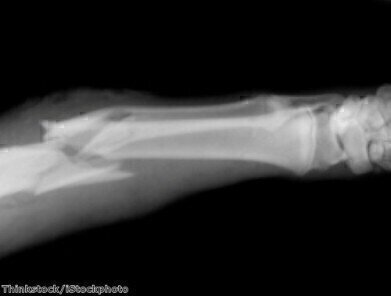-
 The new screws could prove a better course of treatment for healing broken bones
The new screws could prove a better course of treatment for healing broken bones
Microscopy & microtechniques
Silk used to create bone-fixing screws
Mar 05 2014
Pure silk has been used to create screws suitable for repairing bone fractures. Researchers from Tufts University School of Engineering and Beth Israel Deaconess Medical Center (BIDMC) have managed to create screws that are made of pure silk protein taken from the cocoons of silk worms. These new screws could be a better treatment alternative to traditional fixation devices.
With certain bone fractures and breaks, screws are required to help with the bonding of the broken sections, which allows the bone to heal. Usually metal alloys are used to create the screws but these can be unyielding, which causes stress to the bone. They also increase the risk of infection and can affect the healing time of wounds.
In some instances, these metal fixation devices have to be removed once the bone has healed, requiring a second surgery. While synthetic polymers can also be used to create screws for broken bones, they can be hard to place and can cause inflammatory reactions.
Researchers have created surgical plates and screws from silk protein that could offer both improved healing and bone remodelling. They can also be absorbed by the body, which means that patients will not have to undergo a second surgery once their fracture has healed.
The fixation devices were demonstrated in a rodent model and in vitro, the results of which have been published in 'Nature Communications'.
Dr Samuel Lin, from the Division of Plastic and Reconstructive Surgery at BIDMC and associate professor of surgery at Harvard Medical School, said: "Unlike metal, the composition of silk protein may be similar to bone composition. Silk materials are extremely robust. They maintain structural stability under very high temperatures and withstand other extreme conditions, and they can be readily sterilised."
The silk proteins were derived from Bombyx mori silkworm cocoons, it is then folded in a number of complex ways to create screws and plates that are versatile and incredibly strong. Some 28 silk-based screws were implanted in six rats within a laboratory, which was followed up by assessments as four and eight weeks following the initial procedure.
None of the screws failed when they were being implanted and they maintained their mechanical integrity. it is thought they could serve as a good alternative to traditional methods, which have a large number of possible complications.
Digital Edition
Lab Asia Dec 2025
December 2025
Chromatography Articles- Cutting-edge sample preparation tools help laboratories to stay ahead of the curveMass Spectrometry & Spectroscopy Articles- Unlocking the complexity of metabolomics: Pushi...
View all digital editions
Events
Jan 21 2026 Tokyo, Japan
Jan 28 2026 Tokyo, Japan
Jan 29 2026 New Delhi, India
Feb 07 2026 Boston, MA, USA
Asia Pharma Expo/Asia Lab Expo
Feb 12 2026 Dhaka, Bangladesh
.jpg)
-(2).jpg)
















